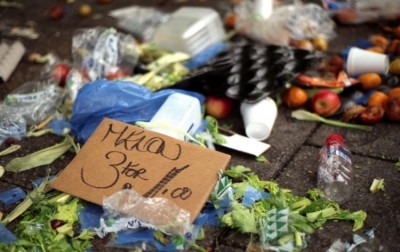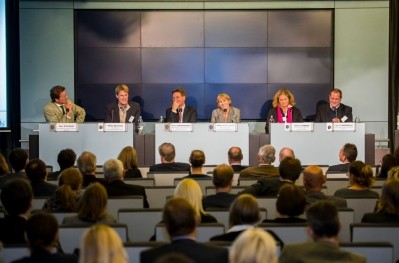Scale of strawberries and lettuce food waste reaches €33.8m annually, WRAP says

The report looks at two commercially important fresh produce crops: strawberries and lettuce, as a way to quantify food waste in primary production.
For these two sectors WRAP estimates that €33.8m (£30m) ended up as waste in the UK in 2015, as a result of factors relating to forecasting and product specifications, and pest and disease damage, being cited most frequently.
The report thought that addressing this issue was likely to require a combination of different initiatives and collaborative supply chain approaches as no single actor or initiative would provide a complete solution.
The development of tools and methods designed to help growers monitor and benchmark their performance was also recommended though each sector would need to develop approaches that suit their specific production systems and value chains.
Speaking about the number of upcoming sector-wide projects, David Moon, head of sustainable food at WRAP referred to the Courtauld Commitment 2025, a voluntary arrangement agreed by organisations across the food system to make food and drink production and consumption more sustainable.
Project range
“Tackling food waste in primary production is a key area of Courtauld 2025 and it’s crucial that we have the facts to prioritise and direct action.”
“This work will help the UK food supply chain become more efficient and competitive, which is crucial in the coming years. It is also critical that we have the support of retailers and producers collaborating on projects to develop and share best practice.”
The projects focus on crops such as soft fruit, root vegetables and salad, addressing issues that arise in production, and piloting innovative models and interventions to overcome these difficulties.
UK supermarket Asda’s sourcing arm IPL, in collaboration with Agrimetrics and the National Institute of Agricultural Botany (NIAB) is developing a new yield forecasting tool in which growers now use smart phones to upload photos of their crop throughout the season.
Intelligent software uses these images to assess the crop’s potential in relation to data from local weather stations, and historical data.
Growers, IPL and Asda then receive a yield report to make accurate decisions earlier in the season that reduce the risk of both gluts, and shortages, at farm and retail level.
This data can then be used to understand how to improve management of the crop in subsequent years to produce higher marketable yields.
Other projects, which focus on utilising grown produce include an initiative led by The Co-op, IPL and Asda, which looks into improving growing systems in order to reduce quantities of fruit grown that are misshapen or suffering from pest or disease-related damage.
“As Courtauld 2025 signatories, we are committed to developing evidence based insights to support the reduction of food waste across the Agri-food system,” said Simon Davis, head of partnerships at Agrimetrics.
“Our modelling approach to quantify food waste in primary production has provided greater visibility of the evidence of food waste at farm level and potential data gaps.
“We look forward to building on this work in partnership with WRAP, providing Agri-food businesses with modelling approaches that enable them to better quantify, measure and manage food waste across key sector groups.”
Food waste worldwide
The Food and Agriculture Organisation (FAO) of the United Nations estimates that globally between 500 and 850 million tonnes of food waste occurs in primary production annually - equivalent to approximately 10-15% of the world’s food production.
Research by the EU-funded FUSIONS project identified a lack of robust data for food waste at primary production, but estimated that it could amount to at least 9 metric tons (Mt) for the EU-28.
FAO firector-general José Graziano da Silva used the 72nd session of the UN General Assembly last month to call for a renewed global commitment to zero tolerance for food loss and waste.
"Zero tolerance for food loss and waste makes economic sense,” he said.
It has been shown that for every €0.85 ($1) companies have invested to reduce food loss and waste, they saved €12 ($14) in operating costs,"
"Investing in measures to prevent food loss and food waste also means making investments in pro-poor policies as it promotes sustainable food systems for a zero hunger world," he added.


























